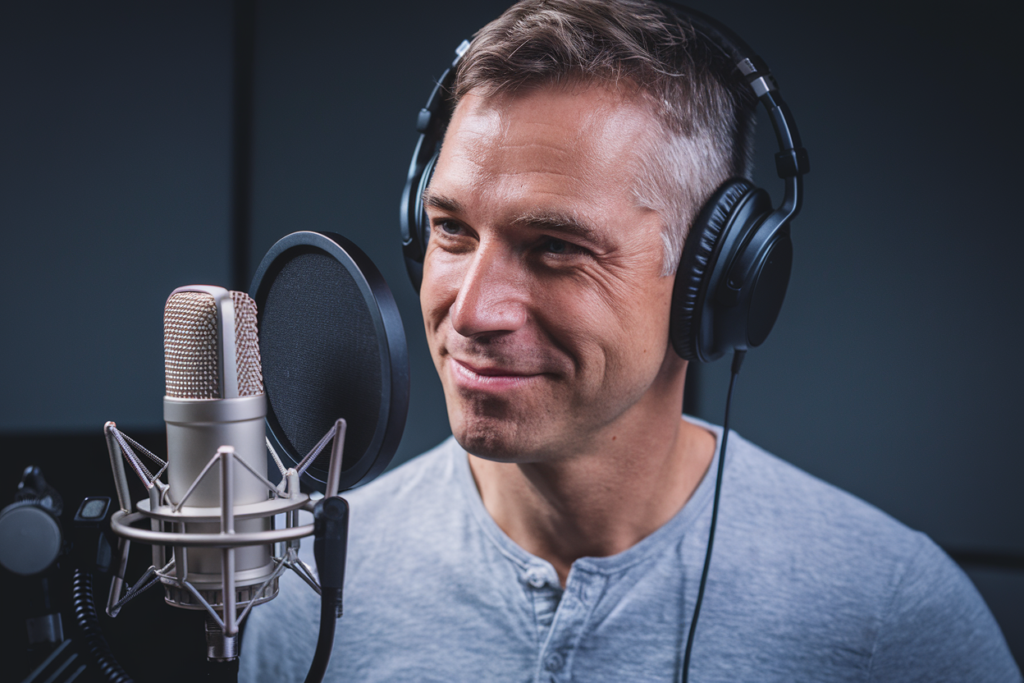Key Takeaways
- Diversity of Accents: British English features a wide range of regional accents, with Received Pronunciation (RP) being the most recognized standard accent associated with authority and education.
- Phonetic Characteristics: A standard British accent is characterized by clear enunciation, non-rhoticity (not pronouncing the “r” at the end of words), and rounded vowel sounds, making it ideal for formal voiceover work.
- Regional Influence: Understanding regional accents like Cockney, Geordie, and Scouse can enhance communication strategies by aligning voice talent selection with your target audience’s cultural identity.
- Evolving Perspectives: The debate over a standard British English accent emphasizes the value of celebrating diverse regional voices instead of strictly adhering to RP norms in contemporary society.
- Comparative Insights: Comparing British English to American and Australian accents reveals distinct phonetic traits that impact message delivery, emphasizing the importance of selecting appropriate voice talent for authentic connections.
Ever wondered if there’s a British English standard accent? You’re not alone. With so many regional dialects and variations, it can feel overwhelming trying to pinpoint what “standard” really means in the context of British English.
Overview of British English Accents
British English features a wide array of accents, each reflecting the unique cultural and historical background of its region. The diversity ranges from the Received Pronunciation (RP), often referred to as the “Queen’s English,” to regional accents such as Cockney, Geordie, and Scouse.
Received Pronunciation stands out as one of the most recognized British accents. It’s frequently associated with authority and education, often used in media and by voice actors aiming for a formal tone. However, RP isn’t universally spoken; many people across England and beyond use their local dialects.
Regional accents provide rich insights into local identity. For instance:
- Cockney: This accent hails from East London and is characterized by rhyming slang.
- Geordie: Spoken in Newcastle, it’s known for its distinct vowel sounds.
- Scouse: Associated with Liverpool, this accent blends influences from Irish immigrants.
Each accent carries nuances that can significantly impact how your message is perceived. If you’re considering using voiceover talent for a project aimed at a UK audience, understanding these variations can enhance your communication strategy.
Voice artists often specialize in specific accents or dialects to cater to diverse client needs. When selecting a voice actor for your project, consider which accent aligns best with your brand’s image or target demographic. A skilled voiceover artist can bring authenticity through their performance while connecting with listeners on a deeper level.
Ultimately, recognizing the complexity of British English accents allows you to make informed decisions when working with voiceover professionals. Whether you’re looking for an authoritative tone or something more relatable, choosing the right accent makes all the difference in delivering your message effectively.
Characteristics of the Standard Accent
The concept of a standard British English accent encompasses specific phonetic features and regional influences that shape its sound. Understanding these characteristics can help you appreciate the nuances involved, especially when choosing voice talent for projects.
Phonetic Features
Phonetic features define how sounds are produced in speech. A standard British accent often exhibits clear enunciation, with certain vowel and consonant pronunciations standing out. For example, Received Pronunciation (RP) typically emphasizes non-rhoticity, meaning the “r” at the end of words isn’t pronounced, as in “car” sounding like “cah.” Additionally, vowel sounds tend to be more rounded compared to other dialects. This clarity makes it a popular choice among voice actors aiming for an authoritative tone in their work.
If you’re considering a voiceover project that requires precision and professionalism, opting for a voice over artist skilled in these phonetic traits can enhance your message’s credibility. The subtlety in sound can significantly affect audience perception.
Regional Influences
Regional accents play a crucial role in shaping what many perceive as the standard accent. While RP is widely recognized, various regions contribute unique elements to British English pronunciation and vocabulary. Accents such as Cockney bring distinctive intonation patterns and slang terms that resonate with local culture.
When selecting a voice actor for your project, understanding these regional influences helps ensure alignment with your target demographic. A Geordie accent might infuse warmth and authenticity into your brand’s message if you’re targeting Northern audiences. Alternatively, employing a Scouse speaker can add vibrancy that connects well with listeners from Liverpool.
Incorporating these considerations into your choice of voice over talent not only enhances relatability but also reinforces cultural ties within communications. By recognizing both phonetic features and regional accents’ influence, you position yourself strategically for effective engagement through audio content.
The Debate Surrounding Standardization
The discussion about a standard British English accent stirs plenty of opinions. It’s crucial to understand the historical context and contemporary perspectives that shape this debate.
Historical Context
Historically, Received Pronunciation (RP) emerged in the late 19th century as a marker of social status and education. This accent gained traction among the upper classes and institutions, establishing itself as the “standard” for educated speech. RP became synonymous with authority, often used by media figures and politicians. However, this focus on standardization overlooked the rich tapestry of regional accents throughout the UK. Each dialect brings its own identity, rooted in local culture and history. As a result, many individuals gravitate toward their local accents rather than conforming to RP norms.
Contemporary Perspectives
Today, attitudes towards accents are evolving. Many people celebrate regional diversity instead of adhering strictly to a perceived standard. Accents like Cockney or Geordie reflect personal heritage and community ties; they resonate with audiences on an emotional level. In voiceover work, understanding these nuances matters significantly—clients often seek voice talent who can connect authentically with their target demographic.
Voice actors today frequently embrace their unique accents to enhance relatability in projects. The idea that one accent is superior fades as industry standards shift toward inclusivity and representation of various voices. As you consider hiring voice over talent for your project, keep in mind how different accents can convey distinct messages or emotions that align with your brand’s image.
Engaging skilled voice artists who appreciate both regional variations and phonetic features ensures your message resonates deeply with listeners while maintaining authenticity in delivery.
Comparisons with Other English Accents
Understanding how British English compares to other accents enriches your perspective, especially if you’re considering voiceover work. Let’s dive into two significant variations: American and Australian English.
American English
American English stands out for its distinct pronunciation and vocabulary. The rhotic accent, which pronounces the “r” at the end of words, contrasts sharply with the non-rhotic nature of Received Pronunciation (RP). For instance, “car” sounds more pronounced in American English than in many British accents. This difference can impact how a message is received by audiences. If your project demands an authentic American feel, selecting a voice actor who embodies that accent ensures a relatable connection.
Moreover, regional accents within America vary widely—from Southern drawls to New York’s fast-paced delivery. Each brings unique characteristics that can either enhance or detract from your project’s message. Choosing a voice artist attuned to these nuances can elevate your content’s authenticity.
Australian English
Australian English introduces its own flavor into the conversation. Known for its distinctive vowel sounds and informal intonation patterns, it presents another layer of complexity compared to both British and American varieties. Australians often use slang terms like “arvo” for afternoon or “brekkie” for breakfast, adding casual charm that’s hard to replicate elsewhere.
In terms of phonetics, Australian speakers often glide over vowels; think about how “mate” sounds different when spoken by an Aussie versus a Brit or an American. This uniqueness makes choosing the right voice talent crucial if you aim to resonate with an Australian audience.
Whether you’re leaning toward an accent familiar to British listeners or one rooted in the U.S., understanding these accents’ characteristics helps you select suitable voiceover talent for your project.
Conclusion
Determining a standard British English accent is more complex than it first appears. While Received Pronunciation holds a notable place in the conversation, the rich variety of regional accents plays an equally important role in shaping identity and culture. Embracing these differences can enhance authenticity, especially in voiceover work where connection with the audience matters.
When you consider voice talent for your projects, reflect on how their accent aligns with your brand’s image. The right choice not only conveys credibility but also resonates deeply with listeners. Understanding these nuances can elevate your messaging and ensure it speaks effectively to your target demographic.
Frequently Asked Questions
What is a standard British English accent?
The standard British English accent, often associated with Received Pronunciation (RP), reflects clear enunciation and non-rhoticity. It’s recognized for its links to authority and education but contrasts sharply with various regional accents that showcase the UK’s rich linguistic diversity.
Why is Received Pronunciation important?
Received Pronunciation (RP) serves as a benchmark for what many consider a “standard” British accent. It carries connotations of social status and education, making it significant in fields like broadcasting and voiceover work where clarity and authority are valued.
How do regional accents influence voiceover work?
Regional accents add authenticity to voiceover projects by resonating emotionally with specific audiences. Understanding these nuances helps brands select voice talent that aligns with their image, enhancing audience connection through relatable delivery.
What are some notable regional British accents?
Notable regional British accents include Cockney (London), Geordie (Northeast England), and Scouse (Liverpool). Each has distinct phonetic features that reflect cultural backgrounds, contributing to the rich tapestry of British English dialects.
How does American English differ from British English?
American English is generally rhotic, meaning the “r” at the end of words is pronounced. In contrast, British RP is non-rhotic. These differences can affect audience perception in voiceover work, necessitating careful selection of appropriate talent based on desired accent characteristics.
What makes Australian English unique?
Australian English features distinctive vowel sounds and informal intonation patterns. Its use of slang adds complexity when choosing voice talent for projects targeting Australian audiences, highlighting the importance of understanding local speech characteristics for effective communication.







